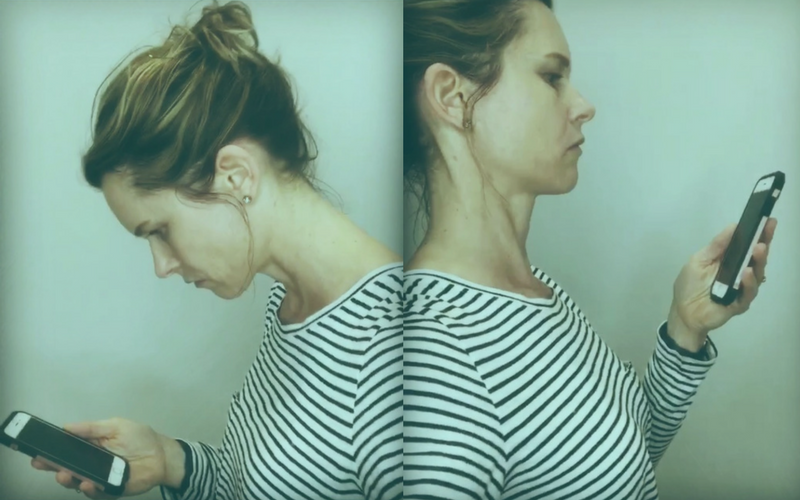There is no denying that technology has transformed the way we live, but we are spending more and more time glued to our mobile devices.
Americans spend 10 hours and 24 minutes on average engaging with their mobile devices every day.1 Within five minutes of waking up in the morning 35% of us check our phones, and 70% use phones during mealtimes with family and friends.2 This excessive reliance on digital devices is taking a toll on our bodies.
Looking down hunched over mobile devices puts excessive strain on the neck which can cause neck pain. This is a very common complaint – in fact, the chance that you will have neck pain at some point in your lifetime is nearly 50%
More and more Americans are suffering from ‘Text Neck’ – this refers to neck pain and damage from looking down at mobile devices for prolonged periods. Staring down at your phone can put immense pressure on your neck and spine.
There is no need to shun all technology. Changing a few habits can make a gig difference in improving your spinal health and overall wellbeing. Here are some tips to help avoid text neck and other spinal health issues resulting from poor posture and excessive use of mobile devices:
- Change the way you hold your phone – bring the screen to eye level so your head is not slouched forward. This way you don’t have to be in a forward-head posture for long periods of time.
- Take regular breaks from mobile devices. For example, don’t check your phone while commuting.
- Get social with family or friends. Have a ‘no phone policy’ during dinner. You’ll enjoy your meal even more without the distraction!
Chiro Can Help
Stretching can help alleviate neck pain an discomfort caused by text neck. Seek advice from your local CAA chiropractor or other healthcare professional about which stretching exercises are suitable for you.
Depending on your circumstances, your chiropractor may suggest a variety of techniques to help improve range of motion and function and will develop a program of care that may combine more than one type of treatment, depending on your needs. In addition to chiropractic adjustments, a care plan may include mobilisation, massage, rehabilitative exercise, as well as dietary and lifestyle advice.

